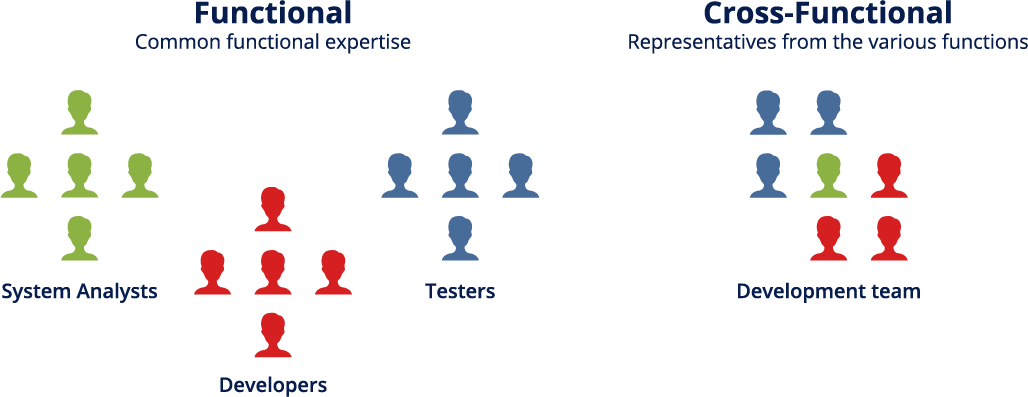Table of Contents
Related Blogs
We assume that many of your cross-functional testing teams and members are working remotely. Everyone seems to be these days. Even more, old-fashioned companies are aiding their employees in working from home. The results are that we are getting a better understanding of how teams work, and how individuals work. We are also learning how to keep productivity high when teams are distributed in different geographic locations.
For example, we recently welcomed a new Technical Support Engineer to our Sales Team. The new employee who lives in South Karnataka India must be able to align his work with the main sales team located in Israel. Up until a few years ago, this would have not been a simple task. Today cross-functional testing teams have more ability to collaborate and stay in contact than ever.
That doesn’t mean that these lone team members don’t have challenges that they need to overcome. Everyone does. That is why managers need to make sure that their team members stay engaged and on task while also allowing for their distance and personal lives.
So let’s welcome our newest team member by looking at Cross-functional testing teams and managers. Let’s see what advice we can offer him and potentially his manager as he settles into his new role.
Cross-Functional teams explained

Closely related to Agile, cross-functional teams are made up of different people who possess wide-ranging skill sets. In different teams, there might be a specific person who codes, analyzes, and even writes documentation. Scrum teams are cross-functional and self-organized. That does not mean that every team member has the entire set of skills that the team uses.
Defining a Cross-Functional Team
As we mentioned above a cross-functional team consists of individuals with diverse traits and domain knowledge. For example, if a sprint cycle is lagging due to a team member being deficient in a specific knowledge base another member of the team for whom this is not an issue can step in and work with the team member to get the sprint done on time.
Sometimes we refer to cross-functional teams as self-contained. It seems antithetical to the way we have built teams in the past. Using separate teams of coders testers and the like. In a more separate team, each team member focuses on a specific skill. As a result, cross-functional teams need specialists and experts to aide them.
Cross-Functional Testing Team Advantages
There are a few main ones. Let’s look.
- Fast theory testing: Testing specialists cover all the stages in product development in one iteration.
- Frequent product delivery: Teams with a good balance of skills will be able to predict development phases and deliver on time.
- Transparency: With more collaboration as a result of the scrum, and shared understanding there will be more transparency. Daily Scrums foster more productivity and the Scrum Master facilitates teamwork.
- Fairness: Spring Planning and Retrospectives help team members feel equal. Scrum Masters add to this by helping everyone participate in the conversation and having everyone share insights and support each team member.
Remote Cross-Functional Testing Team Challenges
With team members in remote locations, the challenges everyone faces are relevant to all team members.
Perhaps most importantly in a Cross-Functional team situation, some of your team members will also belong to other teams in different departments. When working remotely this can lead to responsibility conflicts as each team member juggles projects from different teams.
With everyone trying to balance their tasks it also leads to potential struggles with timetables. Team members might have commitments to other teams and projects. The responsibilities of the remote cross-functional testing team may divide unevenly as a result.
Here are a few more challenges in brief:
- Motivation: Remote team members need to have an environment where they feel challenged and have a general desire to participate and function as a team member.
- Distance: Being removed from company objectives and coworkers can lead to feelings of distance due to a lack of being physically present.
- Lack of Tools: Remote team members might not have the same access to tools as they do when working from their offices.
- Knowledge Sharing: Beyond the team, people working in an office setting are used to walking over to a colleague’s desk to share information. When working remotely these simple and beneficial interactions are essential in receiving news or information.
Advice for the Remote Cross-Functional Team Manager
That brings us back to our new Technical Support Engineer based in Karnataka.

With all of the challenges of being a remote worker, we thought we’d share some of the advice we have about how managers can lead their teams and help remote members beat some of the loneliness and disassociation that comes with working from home.
Keep Communication centralized and Effective
Yes of course there is an app for that. Many teams are staying up to date with one another by using project management apps. We use Jira, but we also stay in touch using Microsoft Teams. These will help streamline communications and give each team member a way to send messages, ask questions, and share updates.
Importantly, you should use technology that works and not simply the trendiest apps. Stick to standardized channels of communication to keep visibility high within teams and between different teams. For remote workers, you should emphasize processes and project goals since they are asynchronously working with the team.
If you want to take it even further, you can use apps like Slack as a social interaction tool. Share TV recommendations, what music you like to listen to, anything to help the team feel as though they are personally involved with their other teammates.
As important as the team meetings are it is also important to check in with team members on an individual basis, so they get the attention they require.
Hit all Project Milestones and Reward success
Any time that you start a new project you have the opportunity to create fresh and positive momentum going forward.
That changes when dealing with the day to day aspects of a project. Sometimes it can be difficult to keep everyone on the same page. To that end, it is important to not only recognize your team’s achievements but also to reward it. It is not only on an individual level. Recognize their achievements in front of the team where possible to help each member celebrate wins and build team bonds.
Something like a team or even companywide virtual toast will help recognize individual achievements while boosting team morale.
Teamwork Time
After cultivating that morale, you will need to create teamwork opportunities. The basis of cross-collaboration comes with opportunities to work together.
Mangers of Cross-Functional testing teams can proactively schedule meetings and conversations. A hidden bonus is that because people are working remotely the manager can decide how these meetings look. We suggest being clearer in your communications and letting your team members know which emails do not need a response and what the time frame might be for others. Teams empowered to make these decisions for themselves usually function better as a unit.
In worrying about our new friend in Karnataka feeling isolated the potential for collaboration does not need to simply encompass work-related topics. If you want to encourage your team to be in touch create ways for them to chat in an off-topic way that will help build relationships.
Ask the Question even if it seems ridiculous.
The best way to make sure that your remote cross-functional team members are feeling like contributors and working to the benefit of the team ask. It is always appreciated when a manager has an interest in their team’s personal lives. Ask them if they need help or feel any frustration in their work. Make sure their priorities align with the team and offer to help make everything clearer for them. Review a previous period and ask what could go better. It is even great to ask if any team members want to get to know each other better or perhaps have a bit of a tiff that needs mediation.
By meeting with each team member 1:1 you will get a picture of their work and emotional health, and it will help you:
- Build better relationships
- Understand where your team members are at mentally
- Give and receive feedback
- Discover what topics need to be addressed on a team or individual level
Life outside of work and on a time difference
With your remote team members located all over the world, their time zones need consideration.
When discussing remote working environments distance often hurts productivity if the team is not brought along in the right ways we discussed above. Schedules should overlap as best as possible so that there are a few hours each day when the entire team is online and on task. That way any necessary responses or answers to important questions can be taken care of.
If you do not take this into account, then you run the risk of having meetings at times that are too early for some and too late for others. The next jump in logic from that is they might feel as though they are being treated unfairly or less valuable to the team.
It is important to remember that just because we have software and apps that give us 24/7 access to one another that does not mean team members will be available 24/7. It is important to let people be and breathe and have social and private lives. Switching off during non-work hours is just as important as being available on work time.
Always be nice to the new guy
Working remotely during a global pandemic can be doubly isolating for cross-functional testing teams. Team members must make themselves available for some overlap hours. It is also important that team managers respect the individual lives of their team members. The goal is to build strong team dynamics and partnerships.
And if you are a Cross-Functional testing team member working remotely make sure to see how our offering can benefit you and your team.
Are you ready to scale your enterprise?
Explore
What's New In The World of Digital.ai
Guide: Mobile Automation with Appium in JavaScript
Learn to automate mobile apps with Appium and JavaScript. Our guide includes setup, test writing, and advanced features to streamline your testing process.
Digital.ai Testing Now Supports iOS 26 Beta
Digital.ai Testing now supports iOS 26 (Beta). Discover the new features and see how it works with a demo below.
Beyond Automation: How AI is Transforming Enterprise Software Delivery
Discover how AI in software delivery is revolutionizing enterprise software by automating tasks, enhancing UX, and transforming the SDLC.



